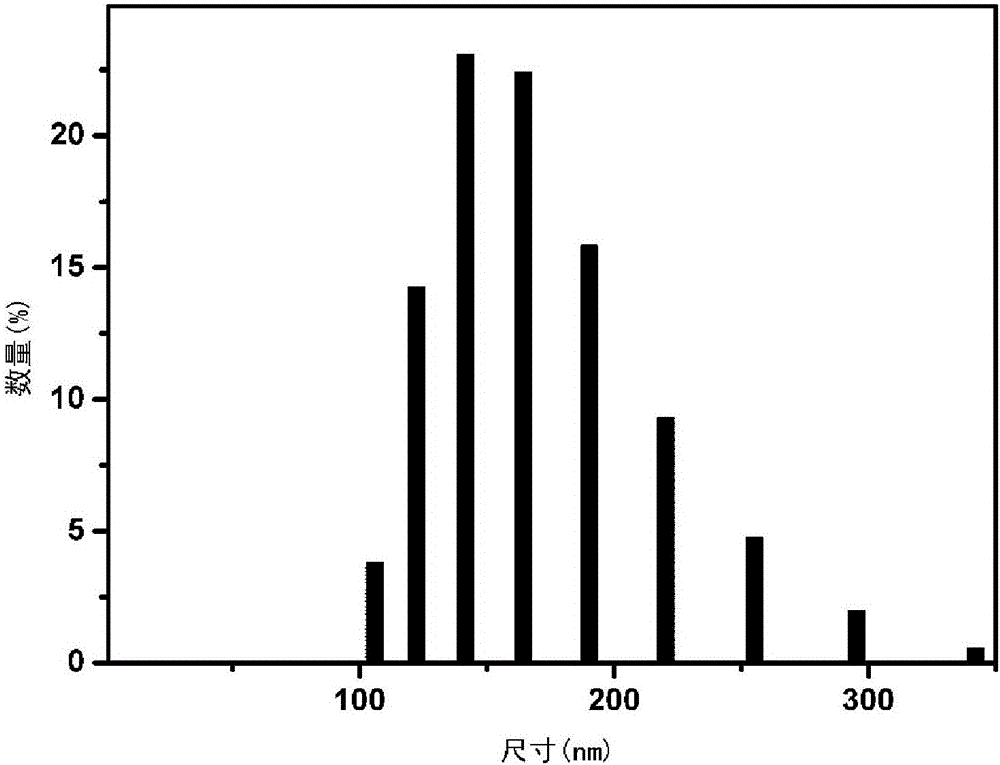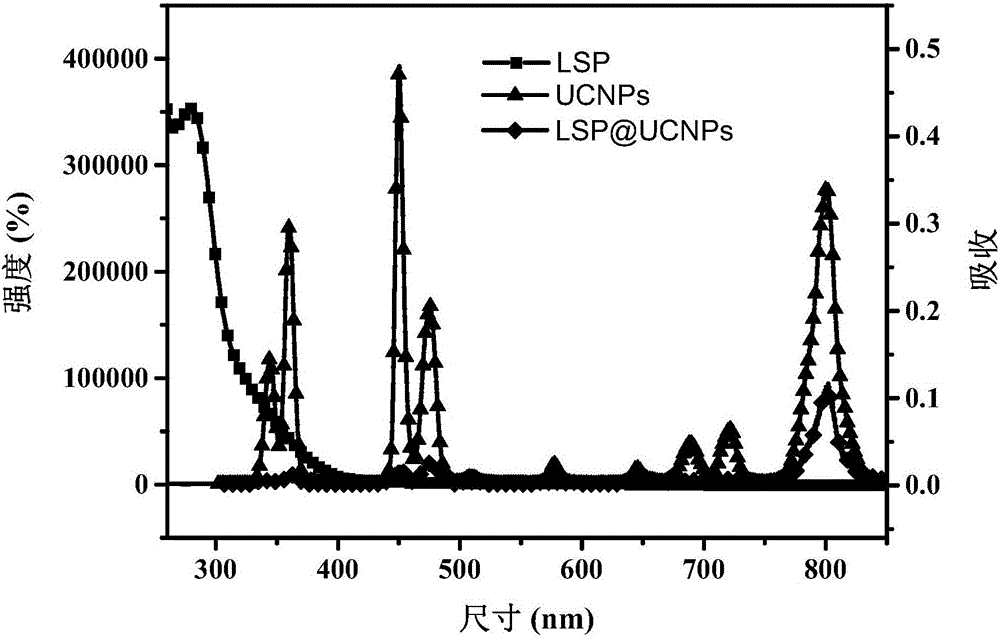Nano carrier for near-infrared light triggered release of chemotherapy drug and preparation method thereof
A nano-carrier and chemotherapeutic drug technology, applied in the direction of nanotechnology, nanotechnology, nano-drugs, etc., can solve the problems of limited penetration ability, low efficiency, unsatisfactory effect, etc., and achieve the effect of overcoming the low release efficiency
- Summary
- Abstract
- Description
- Claims
- Application Information
AI Technical Summary
Problems solved by technology
Method used
Image
Examples
preparation example Construction
[0022] The invention provides a method for preparing a nano-carrier that triggers the release of chemotherapeutic drugs by near-infrared light, comprising: polymerizing a photosensitive monomer, a hydrophilic monomer and a hydrophobic monomer to obtain a photosensitive polymer; Up-converting nanoparticles, mixing the photosensitive polymer with the up-converting nanoparticles, adding water for ultrasonication, and then stirring, until the cyclohexane and chloroform are completely evaporated, and the photosensitive polymer acts on the upper Nanoparticles are converted to produce the nanocarriers.
[0023] Wherein, the photosensitive monomer can be diacrylic acid (1-nitro-2,5-benzhydryl alcohol) ester, and the photosensitive monomer can be synthesized from 2,5-dimethylnitrobenzene as an initial material through a one-step oxidation reaction ( KMnO 4 ,NaOH,H 2 O), one-step reduction reaction (BH 3 , tetrahydrofuran), and finally obtained by esterification of propylene. The hy...
Embodiment 1
[0035] 1) Add 292 mg of diacrylate (1-nitro-2,5-benzhydryl alcohol) ester, 272 microliters of dodecylamine and 500 mg of methoxypolyethylene glycol acrylate into a three-necked flask, and feed nitrogen gas for at least Exhaust the air for 20 minutes, melt and react at 100°C for 12 hours at a stirring speed of 1000 rpm, then add chloroform dropwise at a constant speed, and obtain a solution after the dropwise addition, then add ether to the obtained solution, and heat at 25°C After settling down for 3 hours, the product was filtered and vacuum-dried to obtain the photosensitive polymer LSP.
[0036] 2) The oleic acid complex of ytterbium (ytterbium oleate) and the oleic acid complex of thulium (thulium oleate) were synthesized in advance as precursor substances. Then, a mixture of ytterbium oleate (0.995 mmol), thulium oleate (0.005 mmol) and sodium fluoride (6 mmol) was added to a 50-mL solution containing 6 mL of oleic acid and 15 mL of 1-octadecene in a round-necked flask. ...
Embodiment 2
[0043] 1) Add 300 mg of (1-nitro-2,5-benzhydrylmethanol) diacrylate, 180 microliters of oleylamine and 500 mg of methoxypolyethylene glycol acrylate into a three-necked flask, and feed nitrogen gas for at least 20 Exhaust the air in minutes, melt and react at 90°C for 12 hours at a stirring speed of 1000 rpm, then add chloroform dropwise at a uniform speed, and obtain a solution after the dropwise addition, then add ether to the obtained solution, and heat at 25°C After settling for 3 hours, the product was filtered and vacuum-dried to obtain the photosensitive polymer LSP.
[0044] 2) The oleic acid complex of ytterbium (ytterbium oleate), the oleic acid complex of yttrium (yttrium oleate), and the oleic acid complex of thulium (thulium oleate) were synthesized in advance as precursor substances. Then, a mixture of ytterbium oleate (0.25 mmol), yttrium oleate (0.745 mmol) and thulium oleate (0.005 mmol) and sodium fluoride (6 mmol) was added to a tank containing 6 mL of oleic...
PUM
| Property | Measurement | Unit |
|---|---|---|
| molecular weight | aaaaa | aaaaa |
| particle diameter | aaaaa | aaaaa |
| particle diameter | aaaaa | aaaaa |
Abstract
Description
Claims
Application Information
 Login to View More
Login to View More - R&D
- Intellectual Property
- Life Sciences
- Materials
- Tech Scout
- Unparalleled Data Quality
- Higher Quality Content
- 60% Fewer Hallucinations
Browse by: Latest US Patents, China's latest patents, Technical Efficacy Thesaurus, Application Domain, Technology Topic, Popular Technical Reports.
© 2025 PatSnap. All rights reserved.Legal|Privacy policy|Modern Slavery Act Transparency Statement|Sitemap|About US| Contact US: help@patsnap.com



